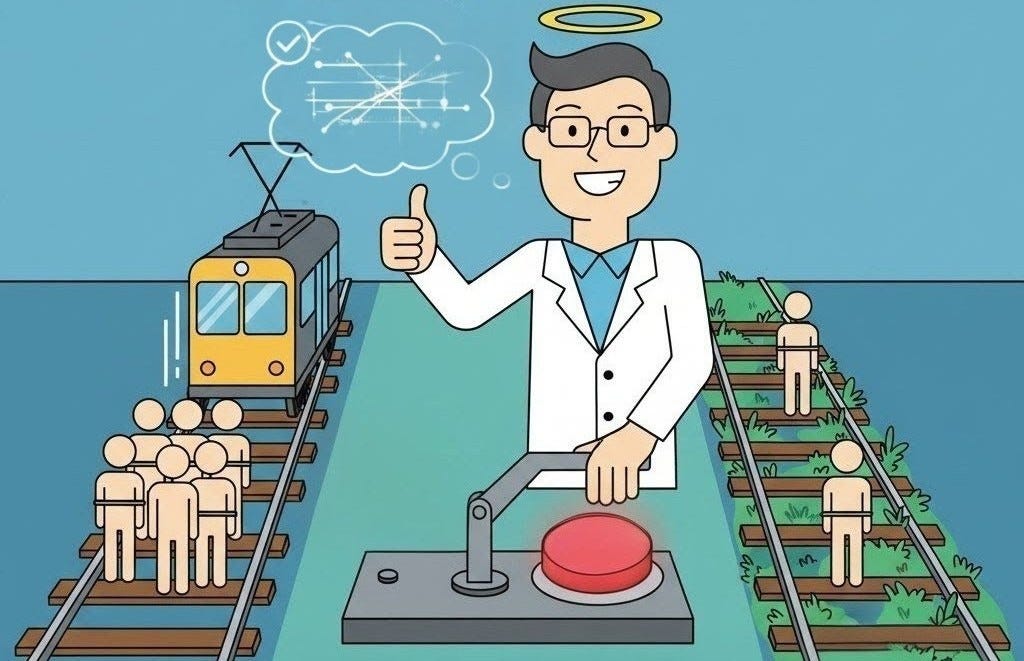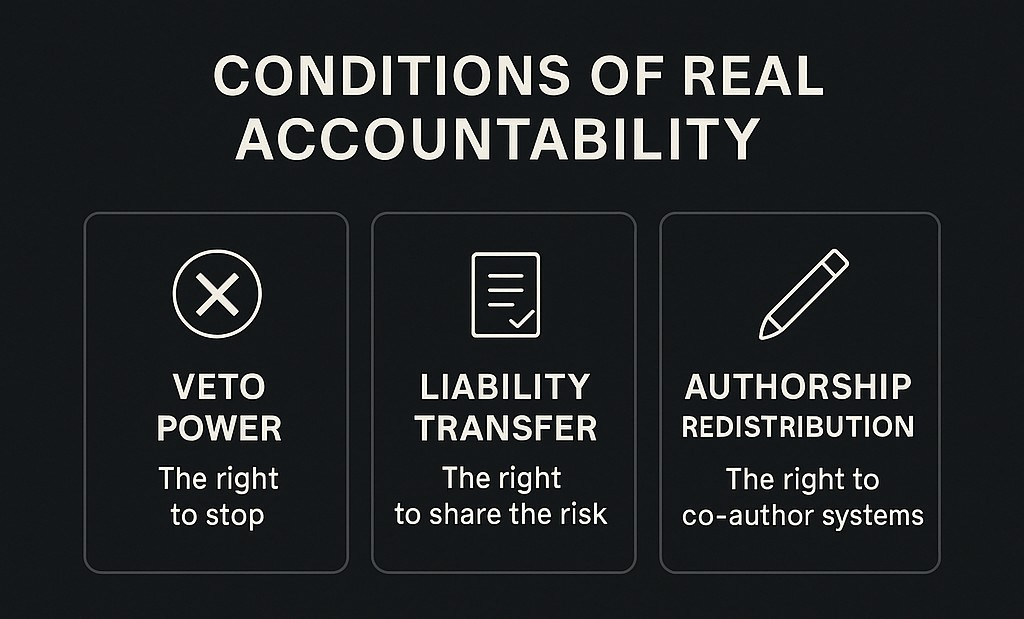The In-House Ethicist
Before an institution can do immense harm, it must first learn to feel good about itself. It must learn to translate its contradictions into virtues and its risks into responsibilities.
Every empire of innovation builds a conscience department. Its purpose is not to reform the machine, but to bless its velocity. This is the institutional function of the in-house ethicist: to make moral noise without moral consequence.
They are hired to translate the messy friction of dissent into the smooth hum of governance, ensuring that ethics serves as an internal shock absorber, not an external brake.
Inside an institution, the ethics team lives where an ‘accountability department’ would be. It exists to absorb the impact of public outrage and internal anxiety, converting that moral volatility into procedural stability.
The result is a stream of artifacts: bias dashboards, safety playbooks, “responsible AI” charters. Each document re-centers the authority it pretends to critique, offering the feeling of rigor without the risk of structural change.
Real accountability requires an outside force with the power to impose consequences. The in-house ethicist is hired to prove the outside is unnecessary.
“Feasibility” is Power in Disguise
The in-house ethicist learns quickly that their most valued trait is “realism.” They master the language of the launch schedule, of what can be shipped, integrated, or delivered this quarter. But this pragmatism is a mask. “Feasibility” is the favorite disguise of power. It shrinks the moral horizon to the size of a balance sheet, replacing the difficult question of “should we?” with the simpler one of “can we afford to?”
This cult of pragmatism leads directly to the worship of measurement. To survive management review, every ethical problem must become a number. Justice becomes precision; fairness becomes variance reduction. Metrics feel safer than politics, and measurement feels like action. But measurement is not accountability. It lets power decide exactly how far its conscience is allowed to run before being pulled back.
The Containment System
Institutions tell a convenient story about a healthy dialogue between internal reformers and outside critics. But this a myth; it isn’t really a dialogue. It’s a containment strategy.
Internal ethicists are funded to treat symptoms—bias, misinformation, harmful content—because these are problems that can be managed with technical fixes. External critics, who diagnose the disease—extractive business models, precarious labor, concentrated ownership—are thanked for their input and then systematically ignored. One group gets a budget and a seat at the table; the other gets a keynote invitation. It is not collaboration; it's keeping rabble-rousers in their lanes.
What institutions truly fear isn’t criticism; it’s being changed by it. They fear permeability. They fear that outsiders might gain real power through:
Veto rights over product launches.
A share in liability for harms.
Co-authorship in the governance process.
These are the tests of real accountability. If an ethics function cannot veto, reassign, or redistribute, it is no better than a public relations asset.
The Closed Loop
And so the ethicist is trapped in a closed loop. They become the high priest of the institution’s faith in itself—the comforting belief that it can be its own watchdog.
As long as power answers only to itself, every internal correction is just a dress rehearsal for the next harm.
The solution isn’t to get rid of ethicists, but to place conscience on the outside. Real accountability begins only where self-trust ends, in systems that cannot congratulate themselves—where contradiction, veto, and consequence are not optional features, but are built into the foundation.
What we need, and sorely lack, is a set of boring, institutional, and repeatable systems designed to replace the need for heroes and happy accidents.
Until that happens, the in-house ethicist will remain what every empire needs most: a conscience that clocks in, clocks out, and is paid by the hour.
The Ethical AI CEO Is a Contradiction by Design
In the conversation around AI, we keep searching for a hero: the ethical leader. This is the conscientious CEO who can navigate the tension between innovation and humanity, steering their company toward profit without sacrificing the public good.






Nailed it! This perfectly descrbes how 'feasibility' is just power's disguise for ethics. So true about shock absorbers, not brakes.